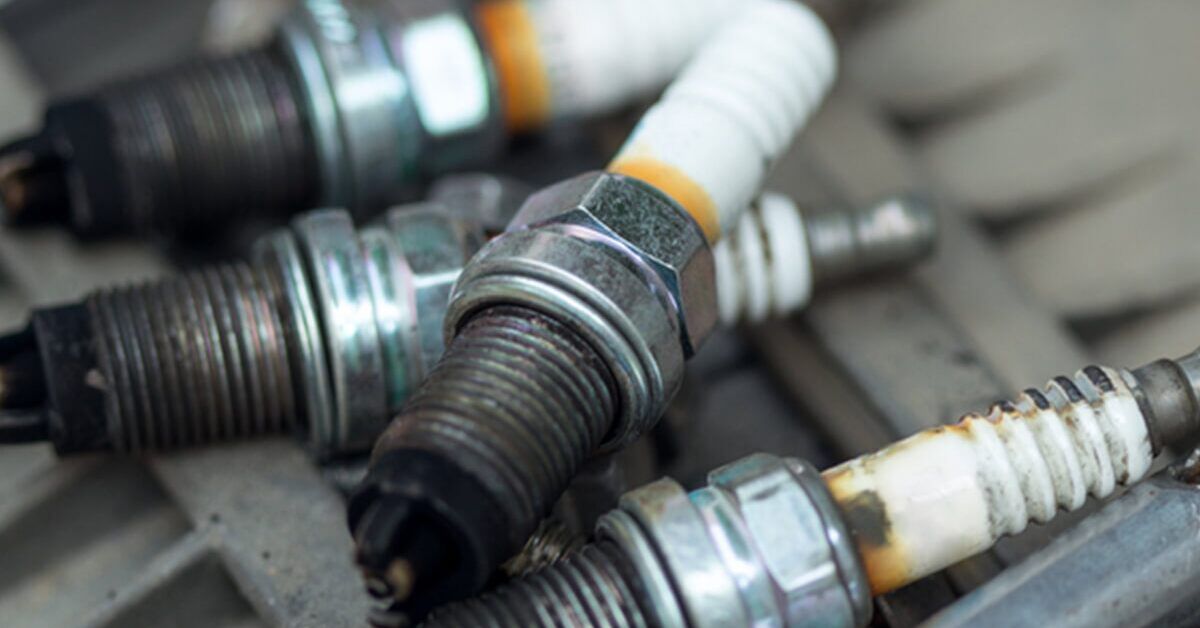When changing spark plugs, having the right socket size is crucial for easy removal and installation. For most vehicles, 5/8-inch or 16mm sockets will fit the spark plugs properly. However, socket sizes can vary between brands and models. Some Fords require a 9/16-inch socket, while many newer European and Asian vehicles need a 14mm socket instead. Less common, but still seen in some applications, are spark plug socket sizes like 7/8-inch, 13/16-inch, 3⁄4-inch, or 18mm. To determine the correct socket size, always refer to the vehicle owner’s manual or a repair guide. Having multiple socket options on hand can help tackle different spark plug socket sizes as needed.
What Is a Spark Plug Socket?
A spark plug socket is a specialized tool used to install and remove spark plugs. Here are some key features of a spark plug socket:
- It has a hex-shaped opening to fit on the spark plug’s hex base. This allows the socket to grip and turn the plug.
- There is a rubber insert inside the opening that grips the spark plug’s ceramic insulator. This prevents cracking or damaging the insulator during installation/removal.
- It has a groove cut in the base to clear the ignition wire terminal attached to the top of the plug.
- The interior is magnetized which helps hold the spark plug in place inside the socket while moving it.
- Common sizes are 5/8″, 13/16″, 14mm, etc. to match common spark plug widths.
- Often has a jointed hinge that provides the needed angle flexibility to reach plugs in tight engine spaces.
- May come with an extension for added reach.
Using the proper spark plug socket makes changing these crucial engine components much easier and prevents damage. It’s a specialty tool every mechanic or DIYer needs in their kit.
What Sizes Are Spark Plug Sockets Available In?
Spark plug sockets come in a range of different sizes to accommodate the many spark plug configurations across vehicle makes and models. Some of the most common spark plug socket sizes are:
- 5/8″ – This is the most widely used spark plug socket size, fitting most domestic vehicles like GM, Ford, and Chrysler.
- 13/16″ – Fits many European makes including Mercedes, VW, BMW, Volvo, and some Ford models.
- 14mm – A very common metric size used on many Asian and European vehicles such as Toyota, Honda, Nissan, Subaru, Audi, and VW.
- 9/16″ – Required for some Ford vehicles.
- 16mm – The equivalent metric size of 5/8″, used on many Japanese models.
- 18mm – Seen on a portion of European vehicles, especially German makes.
- 21mm – Used on some older large engines and motorcycle plugs.
It’s advisable to keep an assortment of common sizes like 5/8″, 13/16″, and 14mm on hand when doing spark plug service to be prepared for various applications. Always consult a vehicle-specific repair guide for the exact socket needed.
Looking for high-quality spark plugs to keep your vehicle running smoothly? Check out our recommended range of premium Spark Plugs that are designed to deliver optimal performance and efficiency. With various sizes and types available, these spark plugs are engineered to meet the specific needs of different vehicles. Whether you’re looking for standard replacements or performance upgrades, our affiliate offers a wide selection to choose from. Explore the link below to find the perfect spark plugs for your vehicle:
Spark Plug Socket Sizes and Their Specific Applications
Here is an overview of some common spark plug socket sizes and example vehicles they are used on:
- 5/8″ – This is the most common size that fits a wide range of domestic vehicles including GM trucks, older Ford pickups, Chrysler minivans, Jeep Cherokee, Chevy Cavalier, etc.
- 13/16″ – Fits many Mercedes-Benz models, BMWs, Volvos, and some Ford vehicles like Explorers, Rangers and F-150s.
- 14mm – Used often on Hondas and Acuras, Toyota and Lexus models, Nissans, Infinitis, Subarus, and some VW and Audis.
- 9/16″ – Required for many Ford vehicles such as the Focus, Taurus, Mustang, Crown Victoria, etc.
- 16mm – Equivalent to 5/8″, fits many Japanese models including Toyota Camry, Nissan Altima, Mazda Miata, etc.
- 18mm – Used on some Mercedes, BMWs, Volvos, VWs, Audis, and Saabs.
- 10mm – For very small engines like weed trimmers, chainsaws, and outboards.
- 21mm – For older large displacement engines, motorcycles, and ATVs.
Always check the owner’s manual or repair guide to identify the exact socket size needed for your vehicle’s spark plugs. Having a selection covering the common sizes will allow you to service most makes and models.
| Spark Plug Size (inches) | Spark Plug Size (mm) | Socket Size (inches) | Use case |
| 7/8 | 22 | 7/8 | Not very common |
| 13/16 | 20 | 13/16 | Cars |
| 3/4 | 19 | 3/4 | Small Engines (Lawn Mowers) |
| 11/16 | 18 | 11/16 | Old BMWs |
| 5/8 | 16 | 5/8 (16mm) | Very common (Scooters, Motorcycles, Cars) |
| 9/16 | 14 | 9/16 | Most Asian Cars and Some Ford Cars |
Spark Plug Socket Sizes for Popular Vehicles
Here are the spark plug socket sizes needed for some popular vehicle models:
- Toyota Camry 4-Cyl – 14mm Toyota Camry 6-Cyl – 16mm
- Honda Accord – 14mm
- Honda Civic – 12mm
- Nissan Altima – 14mm
- Nissan Maxima – 14mm
- Ford F-150 – 5/8″
- Ford Mustang V6 – 5/8″ Ford Mustang GT – 13/16″
- Chevy Silverado – 5/8″
- Chevy Corvette – 5/8″
- Dodge Ram – 5/8″
- BMW 3-Series – 12mm
- Mercedes C-Class – 16mm
- Volkswagen Jetta – 14mm
- Subaru Outback – 14mm
- Toyota Prius – 10mm
- Hyundai Sonata – 14mm
- Kia Sorento – 14mm
- Tesla Model 3 – 14mm
Knowing the exact socket size before starting the job will ensure you have the proper tool to remove and install new plugs efficiently. Always double-check your vehicle’s plug size in the owner’s manual if you are unsure. Having options like 14mm, 5/8”, and 13/16” covers many of the most common sizes.
Read more:
Removing and Installing Spark Plug
Here are some tips for properly removing and installing spark plugs:
- Use the correct size spark plug socket and extension for reach if needed. Confirm socket size in your vehicle repair manual.
- Attach the socket to a 3/8″ drive ratchet. Use a universal joint for better angle access if plugs are deep in the engine.
- Disconnect the ignition coil wire from the spark plug. Pull it straight out to avoid damage.
- Break loose the plug by turning counterclockwise. If stubborn, spray penetrating oil and let sit before attempting.
- Once loose, unscrew it completely by hand to prevent thread damage or snapping off in the cylinder head.
- Inspect old plug condition for fouling, oil deposits, and worn electrodes. This can indicate engine issues.
- Check the new plug gap against the specs in the manual. Adjust if needed by bending the outer electrode carefully.
- Start new plug into threads by hand until resistance is felt before final tightening with the socket.
- Tighten the plug to torque specs in the manual using a calibrated torque wrench. Do not over-tighten.
- Reconnect the ignition coil wire to the plug. Ensure it clicks into place.
- Repeat steps for remaining cylinders, keeping plugs and wires organized.
Following the proper spark plug service procedures helps ensure successful removal and installation. Have the right tools ready to do it correctly.
What a Spark Plug Misfire Feels Like
Here are some of the common symptoms that help identify an engine misfire caused by a bad spark plug:
- Reduced engine power – Lack of combustion in the cylinder prevents that piston from contributing power, making the engine feel sluggish.
- Rough idle – The imbalance of cylinders firing unevenly at idle creates a shaky, erratic sensation.
- Occasional hesitation or jerking under acceleration – As unburned fuel ignites late, it causes sputtering bursts rather than smooth acceleration.
- Backfiring noise through the exhaust – Fuel igniting late in the exhaust system creates loud popping or banging.
- Flashing check engine light – The onboard computer detects misfires and turns on the warning light.
- Increased emissions and poor fuel economy – Incomplete combustion leads to wasted fuel and increased emissions.
- Vibrating steering wheel at idle – The vibration of the misfiring cylinder shakes the chassis and steering components.
Diagnosing exactly which cylinder has the bad plug causing the misfire allows for targeted replacement of only faulty components. An engine misfire can potentially lead to further damage if left unattended.




